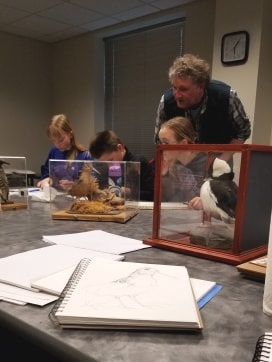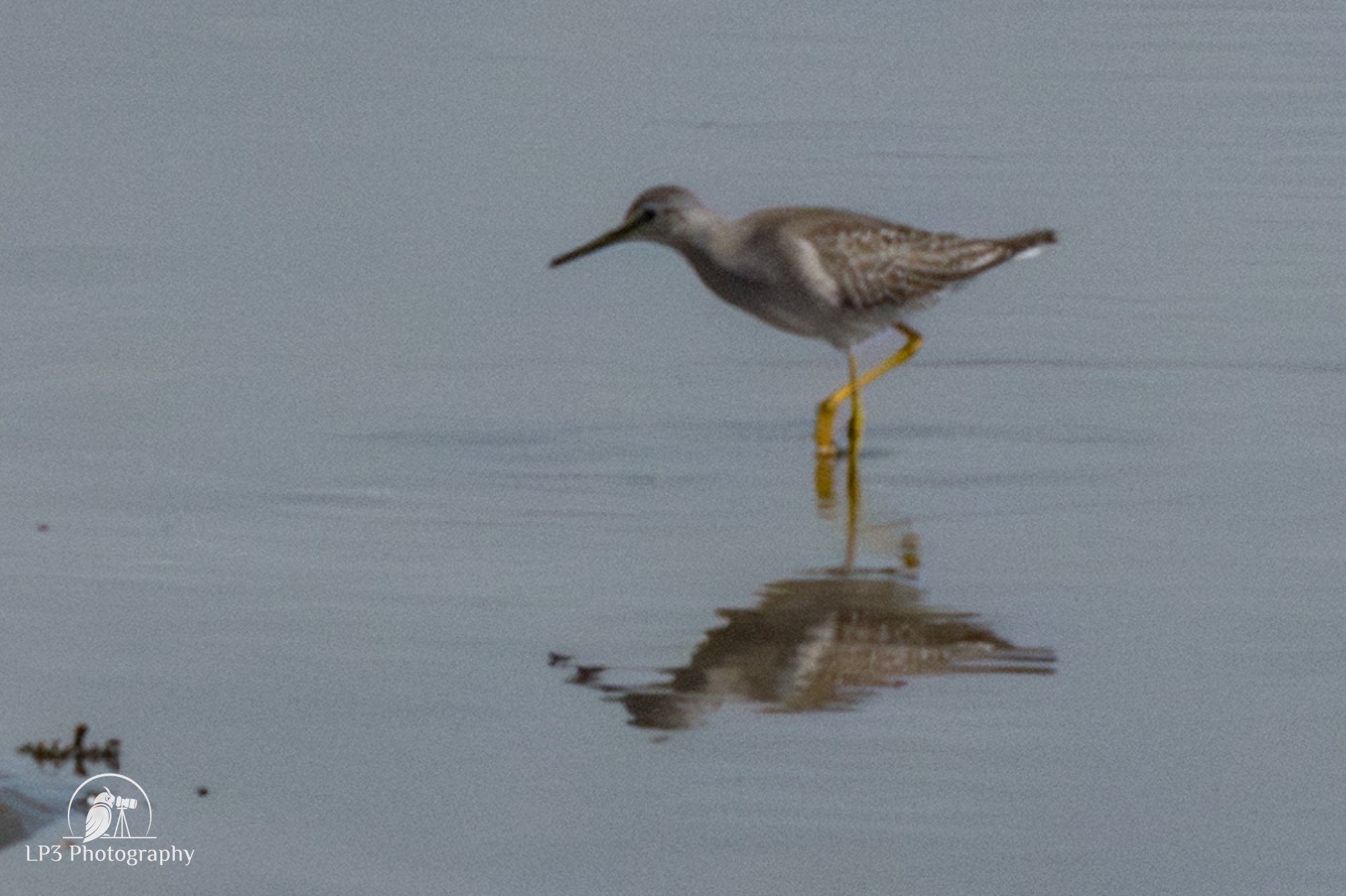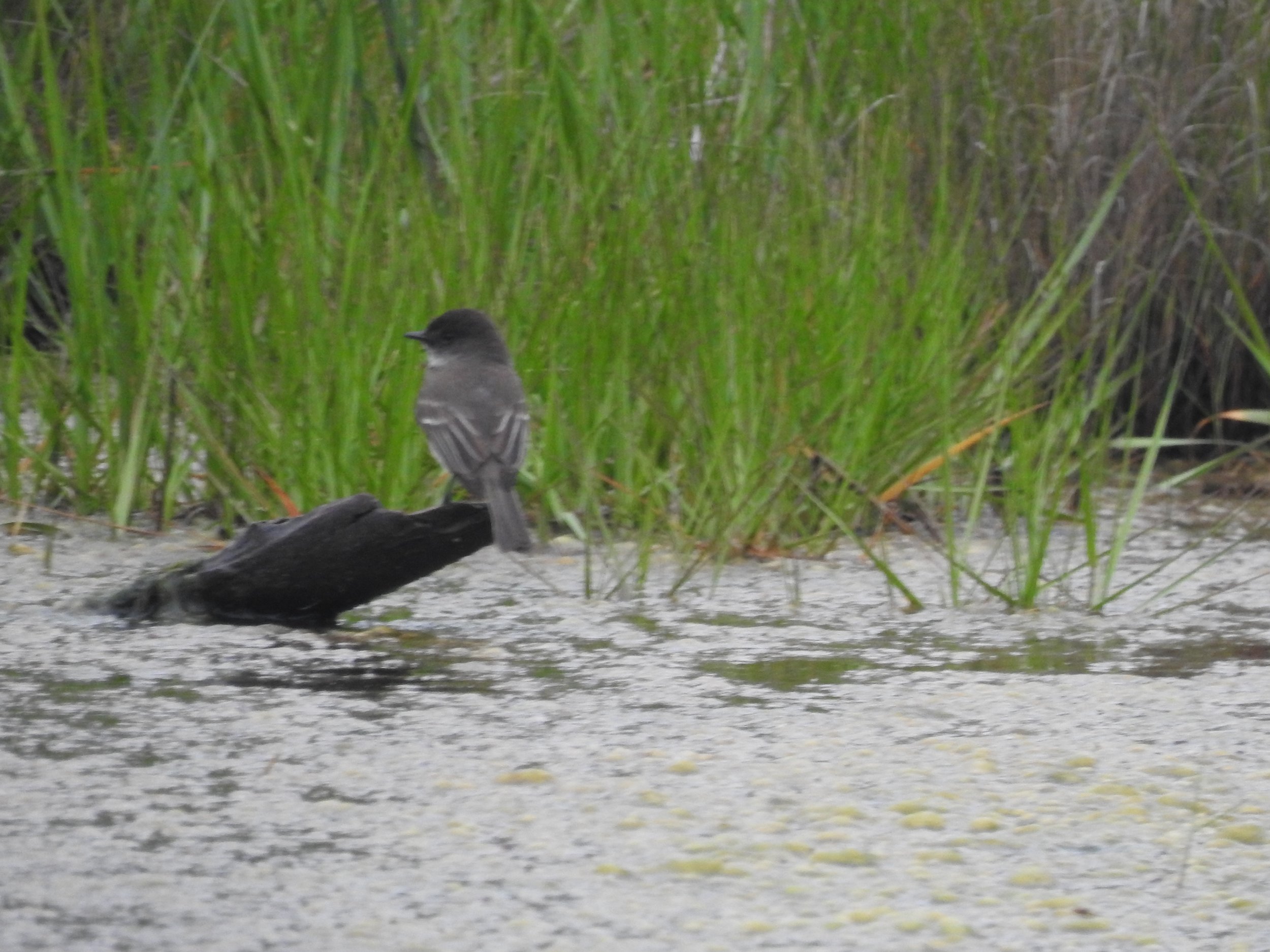by Laurie Pocher
It was a very November-y day at Fort Foster — overcast and cool and a little breezy near the water. We started out on the wooded trails, hoping to pick up some late migrating warblers or wrens. We kept hearing a Carolina Wren calling, but couldn’t get eyes on it. A beautiful male Red-Bellied Woodpecker posed for some photos, while some less cooperative Golden-Crowned Kinglets and Brown Creepers flitted around us. A few Hermit Thrushes skulked in the brush, and some Black-Capped Chickadees, Tufted Titmice and White-Breasted Nuthatches flew back and forth across the trail.
Blue Jays, American Crows, and a Downy Woodpecker were all worked up about something, and a huge flock of American Robins flew overhead, presumably spooked by a raptor. We later saw a couple of Sharp-Shinned Hawks hunting overhead, and decided they were the likely culprits.
From the beach, we saw lots of Red-Breasted Mergansers and several Common Loons, with a lone Northern Gannet off in the distance. We also saw Black and Surf Scoters, and three species of Gulls: Herring, Great Black-Backed, and Bonaparte’s.
The marsh held some great surprises for us, including seven Wood Ducks, a Green-Winged Teal, and a Muskrat! A few Song Sparrows and Cardinals were hanging out in the shrubs bordering the trail.
On our way to the pier, we were surprised again — this time by a late Prairie Warbler. Luckily Ilsa was able to snap a photo so we could get a positive ID. While we waited for it to pop back out in the open, several large flocks of Double-Crested Cormorants flew overhead, looking more like a clown-car than a migration V-formation. We estimated 150 DCCO in total.
A couple of Yellow-Rumped Warblers were actively fly-catching in a juniper tree, where we also saw a House Finch and a couple of Song Sparrows. The lawn and shrubs nearby served up a bonanza of sparrows, including Chipping, Field, White-Throated, Swamp, and Savannah. The elusive Carolina Wren finally showed its face, and a very photogenic Northern Mockingbird posed for us.
From there we walked out on the pier, where a single Red-Throated Loon took flight as a Bald Eagle landed on the rocks near the lighthouse. We wrapped up our morning by watching a small flock of Long-Tailed Ducks flying low and fast across the water.
Other sightings over the course of our walk included Mallard, Common Eider, Ruby-Crowned Kinglet, Red-Breasted Nuthatch, Eastern Bluebird, Cedar Waxwing, American Goldfinch, Dark-Eyed Junco, All in all, we saw 45 species in total. You can see our eBird checklist here: https://ebird.org/checklist/S153726199.
Our next outing will be the Christmas Bird Count in December. Until then… happy birding!















































































































































































































